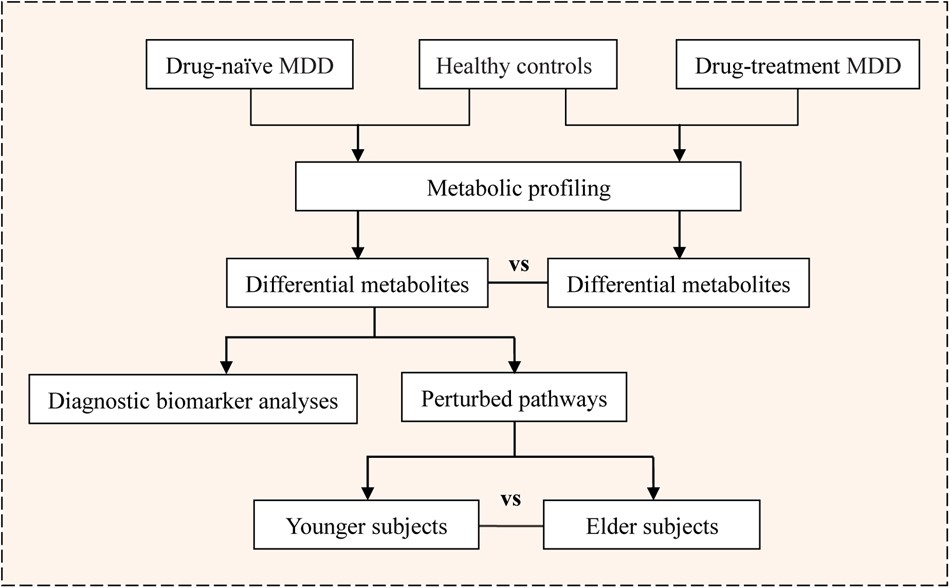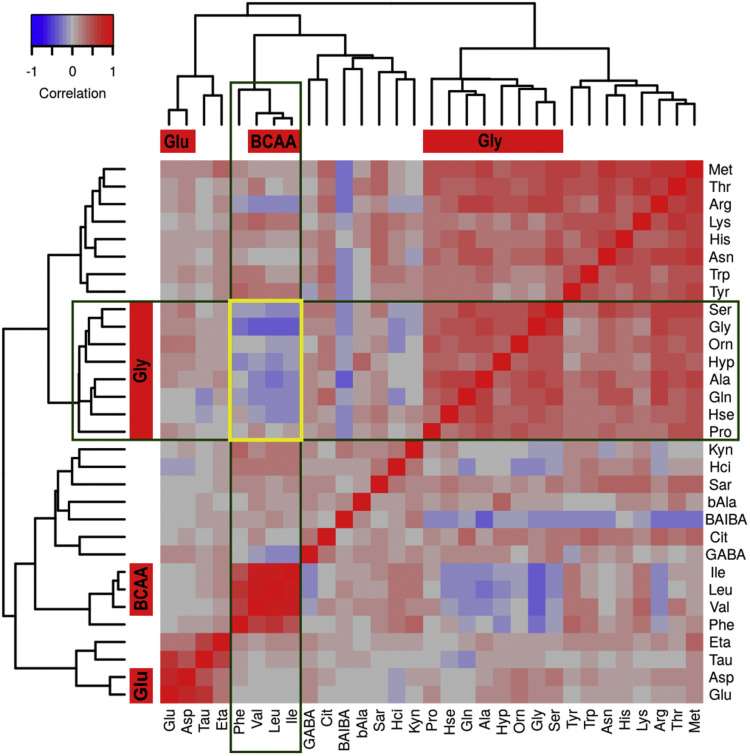Mental illness and substance addiction abuse is the 5th leading cause of death and disease globally. Depression ranks first in the adjusted years of illness disability due to mental illness and substance addiction abuse disorders. Depression is a risk factor for the development of many neurological disorders, and at the same time, depression shares a common neuropathological basis with many neurological disorders. The exploration of depression provides a new way of thinking to decipher the pathogenesis of neurological disorders and the prevention of diseases.
Autism belongs to a group of disorders with multiple developmental dysfunctions in language, cognition, behavior and interpersonal relationships, and is associated with congenital brain neurological dysfunction.
Metabolomics techniques can be applied to study the pathogenesis of depression and autism as well as to discover potential biomarkers for clinical diagnosis and treatment.
Case 1 Potential Independent Diagnostic Markers of Depression in Children and Adolescents (1)
The authors selected 134 samples to participate in the study, including 52 patients with major depressive disorder who had not received medication (DN-MDD), 32 patients with major depressive disorder who had received medication (DT-MDD), and 50 healthy control subjects (HC).
In this study, 134 plasma samples were analyzed using untargeted metabolomics techniques. Thirty-five significant differentials were screened in the DN-MDD and HCs comparison group; 36 significant differentials were screened in the DT-MDD and HCs comparison group; and 6 significant differentials were screened in the DN-MDD and DT-MDD comparison group.

Flowchart of the study analyses in this work.
Pathway analysis of 35 significantly different metabolites found in the DN-MDD and HCs comparison groups showed abnormal fatty acid metabolism and purine metabolism in children and adolescents with major depression. Compared to healthy controls, the DN-MDD group had decreased levels of fatty acids including caprylic, palmitoleic, dodecanoic, oleic, and palmitic acids as well as polyunsaturated fatty acids such as arachidonic, alpha-linolenic, and linoleic acids. Also metabolites of ATP such as adenosine, inosine and hypoxanthine were reduced. Significantly different metabolite analysis found that inosine was significantly associated with major depression in children and adolescents.
Fatty acid metabolism (especially polyunsaturated fatty acids) and purine metabolism are abnormal in children and adolescents with major depression. Inosine could be used as a potential biomarker for the diagnosis of major depression in children and adolescents. Studies have also shown that the pathophysiological characteristics of children and adolescents with depression differ from those of adults with depression, contributing to future improvements in diagnosis and treatment.
Case 2 Dysregulation of Amino Acid Metabolism Diagnostic of Autism Subtypes (2)
Autism Spectrum Disorder (ADS) is characterized by abnormal language skills, abnormal interaction skills, narrow interests, and stubborn behavior patterns. The cause of autism is unknown, or is caused by a combination of genetic, metabolic, and environmental factors. There are no particularly reliable biomarkers available for the diagnosis of autism. Dysregulation of amino acid metabolism has been observed in autistic patients in studies by other researchers as well as in previous studies by the authors, so the authors wanted to determine if dysregulation of amino acid metabolism is a common phenomenon in autistic patients.
A total of 516 children with autism (ASD) and 164 age-matched normally developing children (TYP) were included in this study, divided into a training set and a test set. In the training set, 338 children were recruited, including 253 children with ASD and 85 age-matched children with normal development as a control group. The test set consisted of 342 children, 263 with autism and 79 controls.
The authors firstly performed a Pearson correlation analysis between the amino acids detected in the training set two by two. Then a cluster analysis was performed based on the results of the correlation analysis. The results are shown below.
From the figure, three positively correlated clusters can be seen. Cluster 1 includes metabolites such as serine, glycine, ornithine, 4-hydroxyproline, alanine, glutamine, homoserine and proline. Cluster 2 includes the branched-chain amino acids BACC (leucine, isoleucine and valine) and phenylalanine, where the correlation between BCAAs is higher than the correlation between BCAAs and phenylalanine. Cluster 3 includes glutamic acid and aspartic acid. The part of the graph marked by the yellow box is where the Glycine Cluster crosses the BACCCluster and is negatively correlated.

Heat map with hierarchical clustering dendrograms from pairwise Pearson correlations of metabolite abundances for the training set subjects with autism spectrum disorder.
The authors evaluated the ratio of amino acids to BACC (AA:BACC) as a predictor of ASD diagnosis. The amino acids in BCAA were used as the denominator and those in Glycine Cluster as the numerator. The results of the study showed that the imbalance of the ratio of glutamine, glycine and ornithine to branched-chain amino acids, present in 16.7% of children with ASD, could be used as a diagnostic marker with a specificity of 96.3% and a positive predictive value of 93.5%.
There is a lack of reliable biomarkers for the diagnosis of autism. The authors identified biomarkers that can be used to accurately diagnose a subset of children with autism by analyzing the plasma amino acid composition of 18-48 month-old children with autism and normal children, providing a basis for the diagnosis of ASD and individualized intervention.
Resources
- Zhou, X., Liu, L., et al. (2019). Polyunsaturated fatty acids metabolism, purine metabolism and inosine as potential independent diagnostic biomarkers for major depressive disorder in children and adolescents. Molecular psychiatry, 24(10), 1478-1488.
- Smith, A. M., King, J. J., et al. (2019). Amino acid dysregulation metabotypes: potential biomarkers for diagnosis and individualized treatment for subtypes of autism spectrum disorder. Biological psychiatry, 85(4), 345-354.









